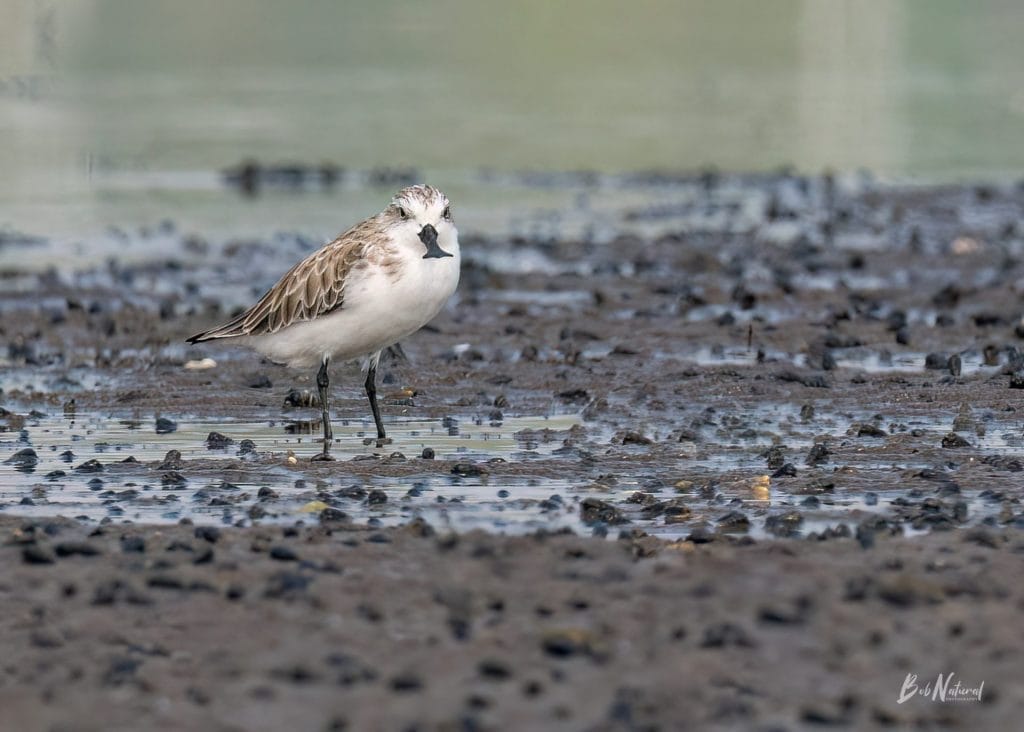By Bob Natural
On the seventh day of March 2024, as we counted shorebirds at the mudflats of Balanga and Pilar in Bataan province, a shiver ran down my spine at the sight of an unusual stint. It was the first “stint” I had seen that morning and it exhibited unusual feeding behavior, consuming its food much faster than a Red-necked Stint, and notably, it had a spoon-shaped bill!
I had to take a moment to confirm my initial identification by closely examining its bill again. My whole body trembled, making it difficult to speak clearly. Immediately, I turned to Rob Hutchinson, who was beside me counting the other waders, and mentioned the possibility that what I had spotted might be a Spoon-billed Sandpiper. In just a few seconds, he began shaking, clearly in a state of shock and disbelief. We were both trembling when we shared the news with our fellow birders that we were witnessing the first-ever record of the Spoon-billed Sandpiper in the Philippines!

Rob and I didn’t take our eyes off the ‘Spoonie’ in our sights. It kept on feeding and I even saw it poop. We had to take turns looking at the bird every time one of us had to move. At one point, it flew a few meters and we were very worried it would leave the mudflat. Fortunately, it didn’t. We continued to enjoy observing and documenting the bird. We noticed it was a bit taller and bigger than the Red-necked Stints, had lighter plumage, and a thin white eyering. Our companions then arrived, most of them also shaking and quickly looked for the bird. We all saw it and we were all filled with excitement and joy. We couldn’t believe the discovery we had just made. In addition to the Spoon-billed Sandpiper, we also recorded threatened species such as Nordmann’s Greenshank, Siberian Sand Plover, Great Knot, Chinese Egret, and an uncommon species in the Philippines, the Little Stint.
In the world of birding and conservation, few species capture the attention and concern of enthusiasts quite like the Spoon-billed Sandpiper (Calidris pygmaea). Renowned for its rarity and vulnerability, this shorebird stands as a symbol of the challenges faced by our biodiversity. With an estimated global population as few as 100 breeding pairs, the Spoon-billed Sandpiper is categorized as a Critically Endangered species and serves as a reminder of the urgent need for conservation efforts to safeguard our planet’s most threatened species.
The Balanga Wetland Park in Bataan advocates for both birdwatching and wetland conservation. It is crucial for local communities and government agencies to come together to preserve natural mudflats, supporting not only shorebirds but also other fauna and flora reliant on this ecosystem. I sincerely hope that the Spoon-billed Sandpiper will be regularly sighted in Bataan every migration season and will also be sighted in other areas in our country.
What a day that was. Yes, us birders wish for a lifer whenever we’re out in the field, but this was a different kind of lifer, a very special one, spoon-full if you may.

Truly special. We are all looking forward to your return, Spoonie!